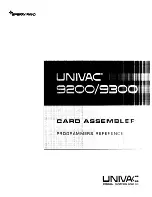
37
2
Technical Reference
2.1
Memory Resources
2.1.1
Addressable Memory
The board utilizes up to 8 GB of addressable system memory. Typically the address space that is
allocated for PCI Conventional bus add-in cards, PCI Express configuration space, BIOS (SPI Flash
device), and chipset overhead resides above the top of DRAM (total system memory). On a
system that has 8 GB of system memory installed, it is not possible to use all of the installed
memory due to system address space being allocated for other system critical functions. These
functions include the following:
BIOS/SPI Flash device (64 Mbit)
Local APIC (19 MB)
Direct Media Interface (40 MB)
PCI Express configuration space (256 MB)
SoC base address registers PCI Express ports (up to 256 MB)
Memory-mapped I/O (I/O fabric) that is dynamically allocated for PCI Express add-in cards
(256 MB)
The board provides the capability to reclaim the physical memory overlapped by the memory
mapped I/O logical address space. The board remaps physical memory from the top of usable
DRAM boundary to the 4 GB boundary to an equivalent sized logical address range located just
above the 4 GB boundary. All installed system memory can be used when there is no overlap of
system addresses.
2.2
Connectors and Headers
CAUTION
Only the following connectors and headers have overcurrent protection: back panel and front
panel USB.
The other internal connectors and headers are not overcurrent protected and should connect
only to devices inside the computer’s chassis, such as fans and internal peripherals. Do not use
these connectors or headers to power devices external to the computer’s chassis. A fault in the
load presented by the external devices could cause damage to the computer, the power cable,
and the external devices themselves.
Furthermore, improper connection of USB header single wire connectors may eventually
overload the overcurrent protection and cause damage to the board.
Front panel I/O connector
Back panel I/O connectors
















































